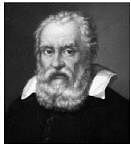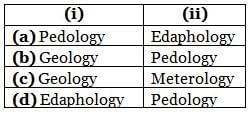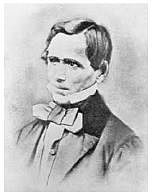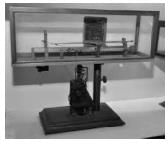Olympiad Test Level 2: Technological Developments and Inventions- 2 - Class 7 MCQ
10 Questions MCQ Test GK Olympiad for Class 7 - Olympiad Test Level 2: Technological Developments and Inventions- 2
He was an Italian scien tist who discovered the principle of the pendulum. He observed the movement of the lamp hanging from the ceiling and noticed that its oscillatory movement was constant. Who was he?


There are two basic branches of soil science, ____(i)____ is concerned with the influence of soils on living things, particularly plans and ____(ii)____ is focussed on the formation, morphology and classification of soils in their natural environment. Select the option which correctly fills the blanks.


Which organization has discovered the presence of Neon Gas in Moon’s atmosphere?
A pacemaker is meant for
What is the theme of the 2015 Indian Science Congress?
He was a Canadian voyageur who is known for his part in experiments on digestion in humans, conducted on him by the American Army physician William Beaumont between 1822 and 1833. Who was he?

Trimix is a breathing gas, consisting of th ree gases and is often used in deep comercial diving. These three gases are
The device shown in the picture is used for measuring growth in plants. It was invented in the early twentieth century by Sir Jagdish Chandra Bose. Name the device.

The Bristol Robotics Laboratory invented a robot which can digest organic matter for fuel and then excretes the waste. What is the name of this robot?
This Indian scientist was kn ighted in 1929 and won the Nobel Prize for physics in 1930 for his observations on the change in wavelength of light that occurs when a light beam is deflected by molecules. This effect has been named by him. Who is this great scientist?
|
7 docs|68 tests
|




















